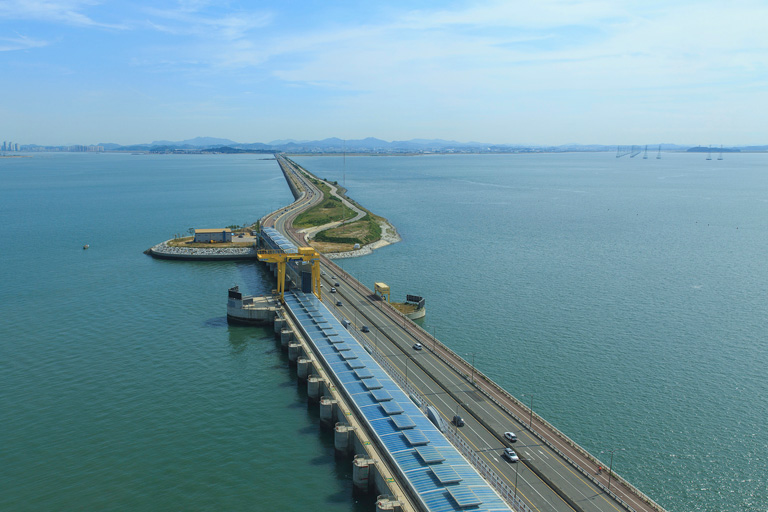With one million megawatts of technically realisable tidal energy worldwide, steel is helping to harvest the power of the seas
Lowering global CO2 emissions is a crucial component in keeping global temperature rises below 2 degrees centigrade and avoiding catastrophic climate change.
If this goal is to be achieved, it’s vital that new sources of reliable, low-emission energy are found and that the global economy’s dependency on emissions-producing fossil fuels is reduced.
Annually, Sihwa’s 10 water turbines generate 55.27 GWh (gigawatt hours) each, enough electricity to power 13,800,000 homes
Some sources of renewable energy haven’t always been able to provide the reliability required to enable the wholesale replacement of traditional energy sources. Fortunately, there is one type of renewable energy that can be depended upon all year round.
The world’s seas and oceans experience two sets of high and low tides every day, making tidal power predictable and reliable. These tides also represent great potential for power generation, with estimates of 1 million megawatts of energy that could be harvested worldwide by tidal power plants.
The technology works by using sluice gates placed along the shoreline to funnel tidal water flows through large turbine generators, spinning them around and transforming the power of the sea into electricity. Steel sits at the core of these tidal installations, forming the turbine blades, the piles that support the turbines, the casings for the nacelles that house the generator components and the support structures for the power plant foundations.
 Sihwa Tidal Power Station, South Korea
Sihwa Tidal Power Station, South Korea
The largest tidal installation in the world is the Sihwa tidal power plant in South Korea. Annually, Sihwa’s 10 water turbines generate 55.27 GWh (gigawatt hours) each, enough electricity to power 13,800,000 homes.
South Korea first began investigating the feasibility of tidal power in the 1970s, but concerns around profitability led to plans being shelved. However, in the early 2000s, the rising costs of fossil fuels, as well as the need to reduce greenhouse gas emissions, caused a reassessment of the strategic value of tidal power generation.
In 2002 the approval for the Sihwa tidal power plant was granted by the Korean governmental water authority, and construction began two years later. The success of the Sihwa installation has led to the South Korean government planning new tidal power plants along the country’s western coastline. One of these projects is a proposed 1,320 megawatt tidal installation in Incheon Bay and a feasibility study has also been completed for a 520 megawatt plant in Garolim Bay.
Sihwa Tidal Power Plant proves that renewable energy sources can be both dependable and economically viable. With a bit of ingenuity and the right materials, renewable energy production can help in the transition to a more sustainable energy mix.
Images: Getty